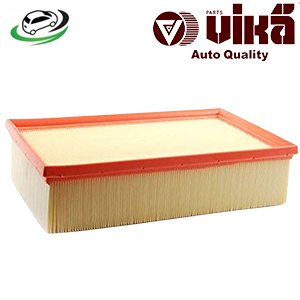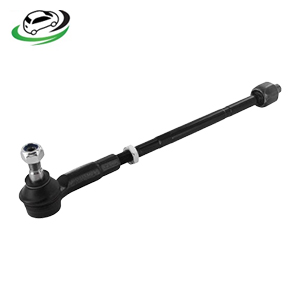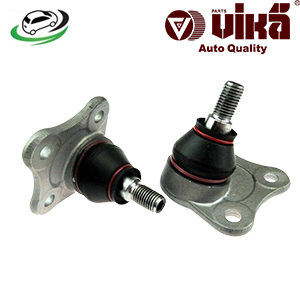-22%
Get Front Right Lower Ball Joint AUDI A3 97-2003 / VW Jetta (Bola) MK4 99-2005/Golf MK4 98-2006 1J0407366C
Ball joints are crucial elements of a vehicle’s suspension system, facilitating smooth and controlled movement between various parts of the suspension. Acting as pivotal connectors, ball joints link the control arms to the steering knuckles, enabling the wheels to move up and down while also allowing for steering movement. Understanding the function, types, benefits, and maintenance of ball joints is essential for appreciating their role in vehicle performance and safety.
Structure and Function of Ball Joints
A ball joint is a spherical bearing comprising a ball and socket enclosed in a lubricated casing. This design allows for multi-directional movement, similar to the human hip joint, providing both rotational and pivoting capabilities.
Components of a Ball Joint
- Ball Stud: The central component with a spherical end, fitting into the socket.
- Socket: The cup-shaped part that holds the ball stud, allowing for rotational movement.
- Bearing: Surrounds the ball stud within the socket, facilitating smooth movement.
- Boot: A rubber or plastic cover that protects the joint from dirt, debris, and moisture.
- Lubrication: Grease or another lubricant inside the joint reduces friction and wear.
Function in Suspension System
Ball joints allow the wheels to move up and down in response to road conditions while also enabling the wheels to pivot during steering. This dual functionality is essential for maintaining control and stability during various driving maneuvers, such as cornering, braking, and navigating uneven terrain.
Types of Ball Joints
Ball joints come in various types, designed to meet specific requirements of different suspension systems.
Load-Carrying Ball Joints
These ball joints support the vehicle’s weight and absorb the forces generated during driving. They are typically found in the lower control arms of the suspension system.
Non-Load-Carrying Ball Joints
Also known as follower or guide ball joints, these do not bear the vehicle’s weight but guide the movement of the wheels. They are usually located in the upper control arms.
Adjustable Ball Joints
Adjustable ball joints allow for fine-tuning of wheel alignment, providing greater control over the suspension setup. This adjustability is beneficial for performance tuning and correcting alignment issues.
Benefits of Ball Joints
Ball joints offer several benefits that enhance vehicle performance, safety, and comfort.
Improved Steering and Handling
Ball joints play a critical role in ensuring precise steering and handling. By allowing the wheels to pivot smoothly, ball joints contribute to responsive and accurate steering control. This is particularly important for maneuvering, cornering, and maintaining directional stability.
Enhanced Ride Comfort
By accommodating the up-and-down movement of the wheels, ball joints help absorb shocks and vibrations from the road. This absorption reduces the transmission of these forces to the vehicle’s cabin, resulting in a smoother and more comfortable ride for occupants.
Increased Safety
Properly functioning ball joints are essential for maintaining wheel alignment and stability, which are crucial for safe driving. Misaligned or worn ball joints can lead to steering issues, uneven tire wear, and reduced braking efficiency, compromising overall vehicle safety.
Longevity and Durability
Modern ball joints are designed for durability, often featuring high-quality materials and advanced sealing technologies that protect against contamination and wear. This longevity reduces the need for frequent replacements and maintenance.
Common Issues and Maintenance of Ball Joints
Ball joints, like all mechanical components, are subject to wear and tear over time. Regular inspection and maintenance are crucial for ensuring their proper function and extending their lifespan.
Signs of Worn Ball Joints
- Clunking Noise: A clunking or knocking sound when driving over bumps or during turns can indicate a worn or loose ball joint.
- Vibration: Excessive vibration in the steering wheel, especially at higher speeds, can be a sign of ball joint issues.
- Uneven Tire Wear: Worn ball joints can cause misalignment, leading to uneven tire wear.
- Steering Wander: A feeling of looseness or wandering in the steering can signal ball joint problems.
Maintenance Tips
- Regular Inspection: Periodically inspect ball joints for signs of wear, damage, or contamination.
- Lubrication: Ensure that ball joints are properly lubricated to reduce friction and wear. Some ball joints are sealed and do not require lubrication, while others have grease fittings for periodic lubrication.
- Replacement: Replace worn or damaged ball joints promptly to avoid further suspension damage and maintain vehicle safety.
Advances in Ball Joint Technology
Modern advancements in ball joint technology have led to improved performance, durability, and ease of maintenance.
High-Quality Materials
The use of advanced materials, such as high-strength steel and durable composites, enhances the strength and longevity of ball joints. These materials are designed to withstand the stresses and strains of driving while providing consistent performance.
Enhanced Sealing Technologies
Improved sealing technologies protect ball joints from contamination by dirt, water, and other debris. These seals help maintain the integrity of the lubrication within the joint, reducing wear and extending the life of the ball joint.
Innovative Designs
Modern ball joints feature innovative designs that provide better load distribution and reduced friction. These designs enhance the overall performance of the suspension system and contribute to a smoother, more controlled driving experience.
Follow us on Facebook for more parts.



